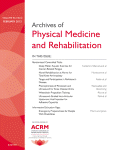 To monitor treatment effects in patients with congenital myopathies and congenital muscular dystrophies, valid outcome measures are necessary. In this observational study based on data previously collected from several cohorts, the Motor Function Measure (MFM) was examined for robustness and changes are proposed for better adequacy. A total of 289 patients aged 5 to 77 years old were involved in this study that was carried out in nineteen departments of physical medicine or neuromuscular consultation in France, Belgium, and the USA. A Rasch analysis examined the robustness of the Motor Function Measure across the disease spectrum. The three domains of the scale (standing position and transfers, axial and proximal motor function, and distal motor function) were independently examined with a partial credit model. The original 32-item MFM did not sufficiently fit the Rasch model expectations in neither of its domains. Switching from a four- to a three-category response-scale in 18 items restored response order in 16. Various additional checks suggested the removal of seven items. The resulting 25-item MFM (or Rs-MFM25CDM) demonstrated a good fit to the Rasch model. Domain1 was well-targeted to the whole severity spectrum -close mean locations for items and persons (0 vs. 0.316)- whereas Domains 2 and 3 were better targeted to severe cases. The reliability coefficients of the Rs-MFM25CDM suggested sufficient ability for each summed score to distinguish between patient groups (0.9, 0.8, and 0.7 for Domains 1, 2, and 3, respectively). A sufficient agreement was found between the results of the Rasch analysis and physical therapists’ opinions. The Rs-MFM25CDM can be considered as a clinically relevant linear scale in each of its three domains and may soon be reliably used for assessment in congenital muscle disorders.
To monitor treatment effects in patients with congenital myopathies and congenital muscular dystrophies, valid outcome measures are necessary. In this observational study based on data previously collected from several cohorts, the Motor Function Measure (MFM) was examined for robustness and changes are proposed for better adequacy. A total of 289 patients aged 5 to 77 years old were involved in this study that was carried out in nineteen departments of physical medicine or neuromuscular consultation in France, Belgium, and the USA. A Rasch analysis examined the robustness of the Motor Function Measure across the disease spectrum. The three domains of the scale (standing position and transfers, axial and proximal motor function, and distal motor function) were independently examined with a partial credit model. The original 32-item MFM did not sufficiently fit the Rasch model expectations in neither of its domains. Switching from a four- to a three-category response-scale in 18 items restored response order in 16. Various additional checks suggested the removal of seven items. The resulting 25-item MFM (or Rs-MFM25CDM) demonstrated a good fit to the Rasch model. Domain1 was well-targeted to the whole severity spectrum -close mean locations for items and persons (0 vs. 0.316)- whereas Domains 2 and 3 were better targeted to severe cases. The reliability coefficients of the Rs-MFM25CDM suggested sufficient ability for each summed score to distinguish between patient groups (0.9, 0.8, and 0.7 for Domains 1, 2, and 3, respectively). A sufficient agreement was found between the results of the Rasch analysis and physical therapists’ opinions. The Rs-MFM25CDM can be considered as a clinically relevant linear scale in each of its three domains and may soon be reliably used for assessment in congenital muscle disorders.
